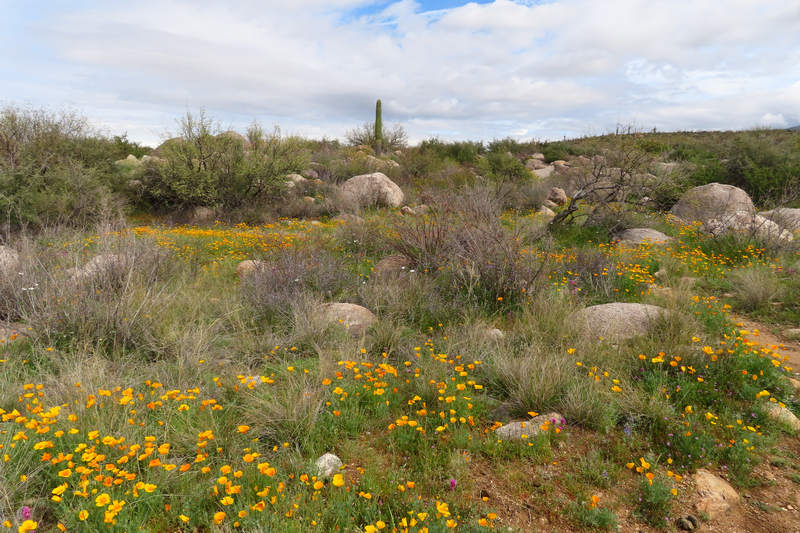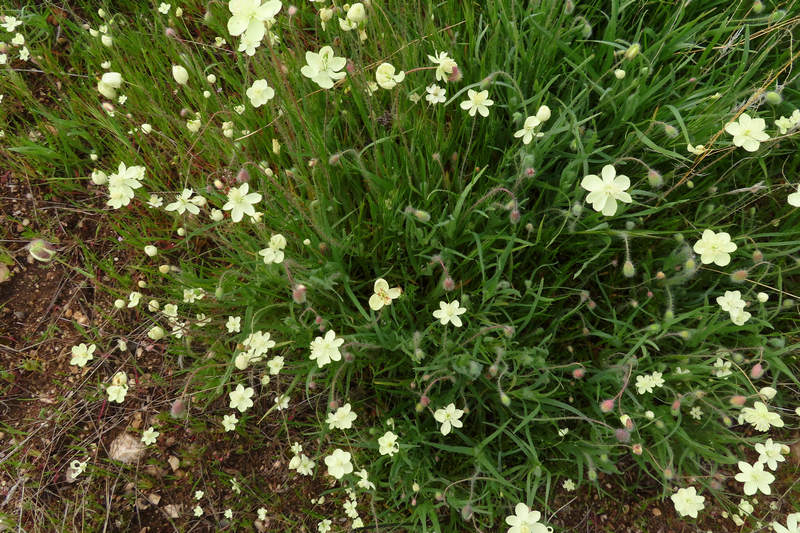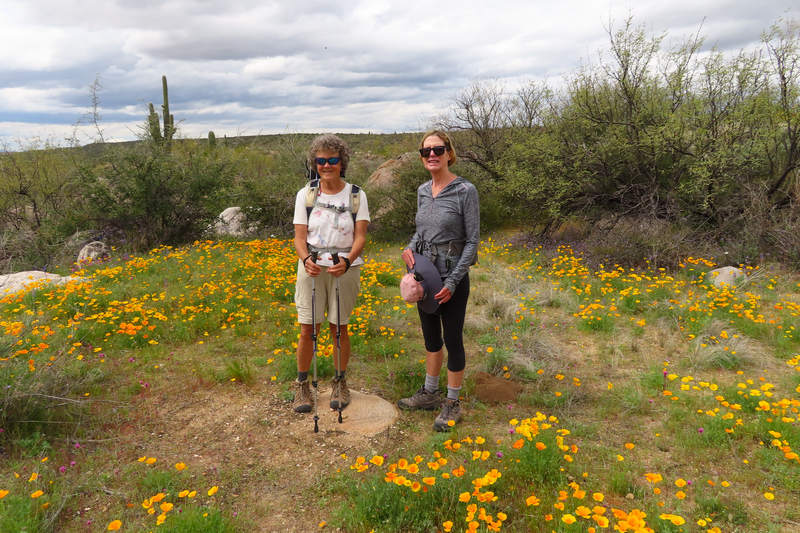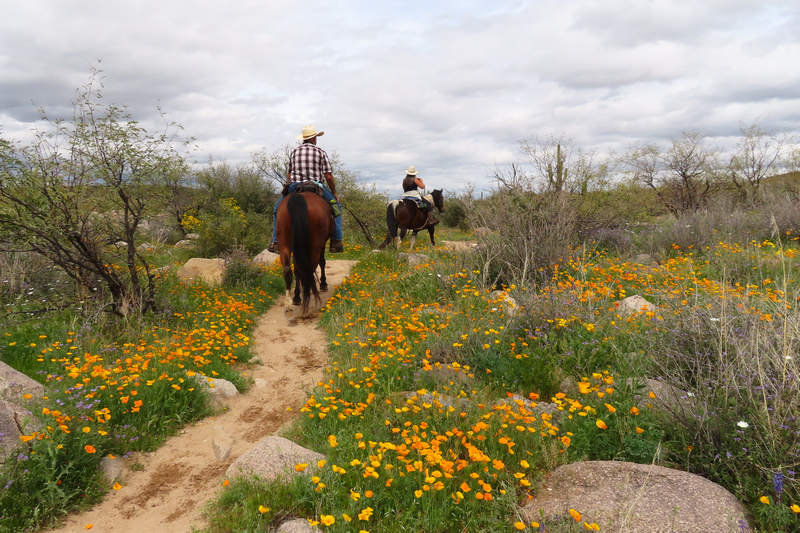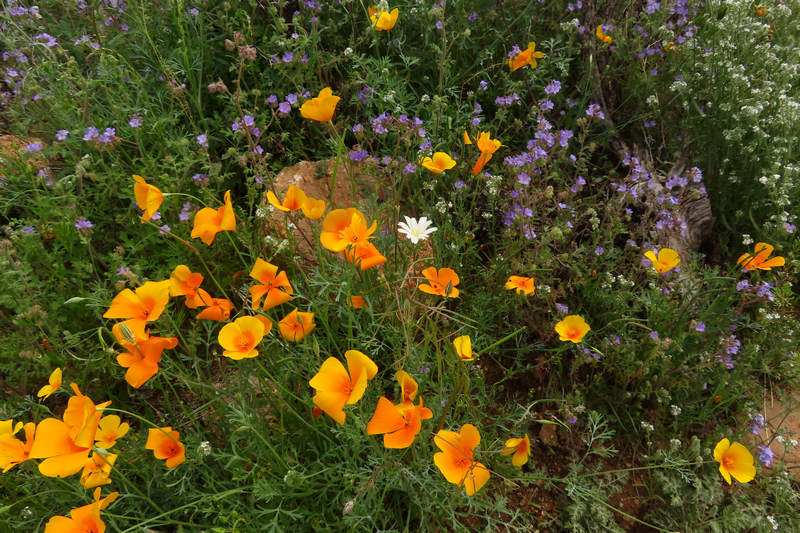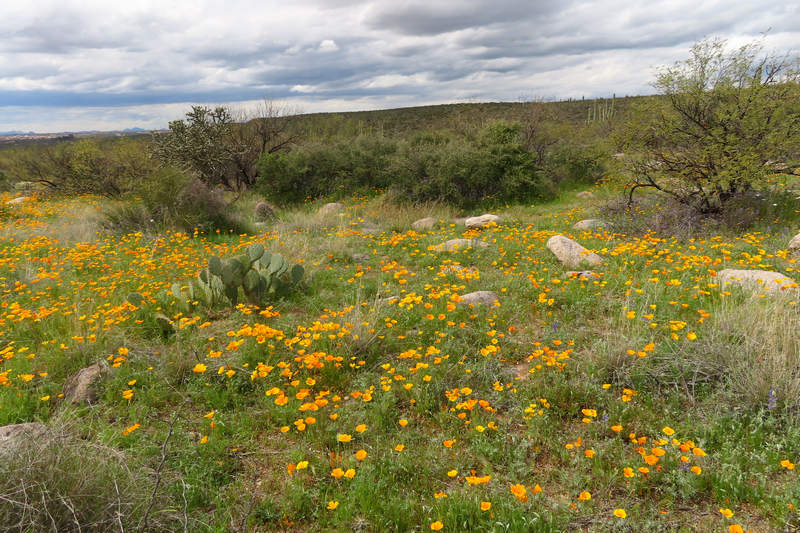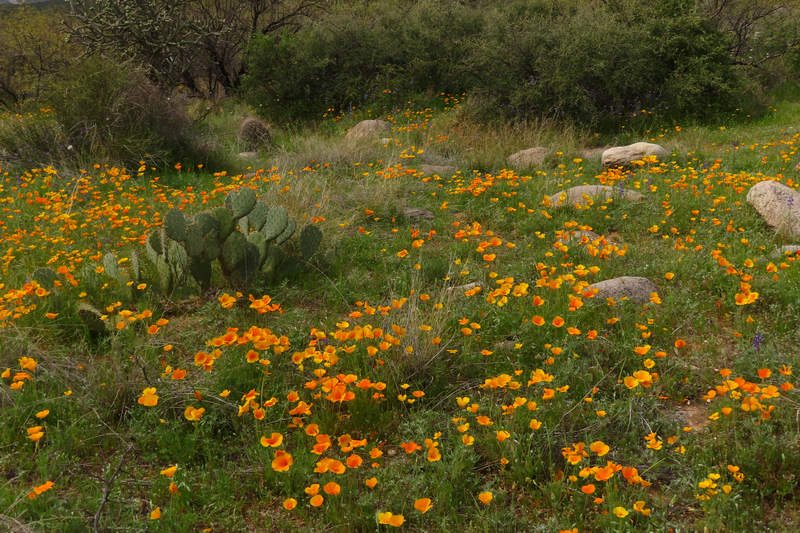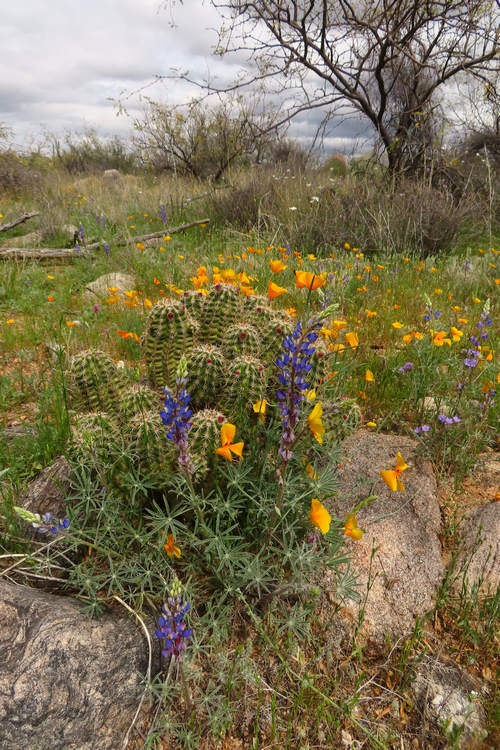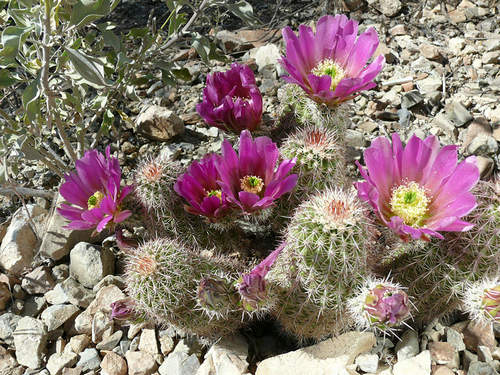Mike Breiding's Epic Road Trips: March ~2020~
Santa Catalina Mountains
Sutherland Trail
Flower Power!!
11 March 2020
Hiking the Sutherland Trail in the Santa Catalina Mountains
!! Flower Power !!
As with last spring we hit the jackpot again with glorious spring wild flowers here in the Sonoran Desert.
Betsy and I enjoyed the display in Catalina State Park while hiking with Cindy, Debra, Priscilla, Robert, Bob and Rob. The weather provided us with some thick low clouds and high humidity. And by "high" I mean "West Virginia August" high. Very unusual for us to experience this and it was a preview of what is to come when we get back home to West Virginny.
The total cloud cover really gave us a different look at everything. Unlike most days there was not a shadow to be found and even light made for some interesting photos. Very different from the intense, sun drenched photos I usually take.
So, here they are. Enjoy!
Click on the photos below for a larger image.
Of course the poppies are always the stars of the show and can be seen by the millions in these here parts.
Most "poppy watchers" will tell you there are two species which occur in the Sonoran Desert of the United states - the California poppy (Eschscholzia californica) and the Mexican poppy (Eschscholzia californica ssp. mexicana) however it is now thought they may be one and the same species. The Lady Bird Johnson Wildflower Center web page entry for "Mexican poppy" has this to say.
The Spanish name, Amopalo del Campo, means “poppy of the countryside.” This is appropriate, for when there are ample winter rains in the desert, this poppy grows in profusion, covering gravelly outwash fans and arid flats with a golden carpet. Once considered a separate species, Mexican Gold Poppy is now recognized as a desert-inhabiting subspecies of California Poppy (E. californica).
The two subspecies are exceedingly similar, one consistent difference being that the first leaves on seedlings of Mexican Gold Poppy are linear and undivided, whereas on seedlings of California Poppy they are divided in a Y-shape (a difference learned by careful greenhouse study).The genus is named after Dr. J.F. Eschscholtz who lived from 1793 to 1831. He performed duties as a surgeon and naturalist with Russian expeditions to the Pacific coast from 1815 to 1818.
This is Purple Owl's Clover (Castilleja exserta). It was bit on the scarce side last year but this year it was putting on quite the show.
(Castilleja exserta) (formerly (Orthocarpus purpurascens)) is a species of plant in the genus which includes the Indian paintbrushes. Its common names include purple owl's clover, escobita, and exserted Indian paintbrush.
This is a crucial host plant for the Bay checkerspot butterfly (Euphydryas editha bayensis), which is a threatened species that is endemic to the San Francisco Bay region in California.
Castilleja exserta is an annual herb about 100–450 millimetres (4–18 in) tall with a hairy stem covered in thready leaves. Like other related Castilleja plants, this is a hemiparasite which derives some of its nutrients directly from the roots of other plants by injecting them with haustoria. This is the reason for its small, reduced leaves.
Although this species is variable in appearance and easily hybridizes with other Castilleja species, it generally bears a brightly colored inflorescence of shaggy pink-purple or lavender flowers. The thin, erect bracts are usually tipped with the same color, giving the inflorescence the appearance of a paintbrush.
Source: WikiPedia
We "oohed" and "aahed" with every turn in the trail.
These little lovelies are Creamcups.(Platystemon californicus) Creamcups often grow in moist, sandy ground at the edges of desert washes. There were large drifts of Creamcups with thousands of blossoms.
From my limited experience with spring flowers in the Sonoran desert I have found plants with white flowers to be uncommon.
Platystemon is a monotypic genus of flowering plants in the poppy family containing the single species Platystemon californicus, which is known by the common name creamcups. It is native to Oregon, California, Arizona, Utah and Baja California, and is found in open grasslands and sandy soils below 6,000 feet (1,800 m) elevation.
Platystemon californicus is a variable plant taking such a wide range of forms it has been split, reorganized, and redescribed as up to 57 different species. Its form often varies according to geography and habitat conditions. Coastal forms may be hairless and a bit succulent, while semidesert individuals can be squat, hairy plants. Some authors describe separate varieties, which are ecotypes adapted to specific, often very limited, habitat types.
Source: WikiPedia
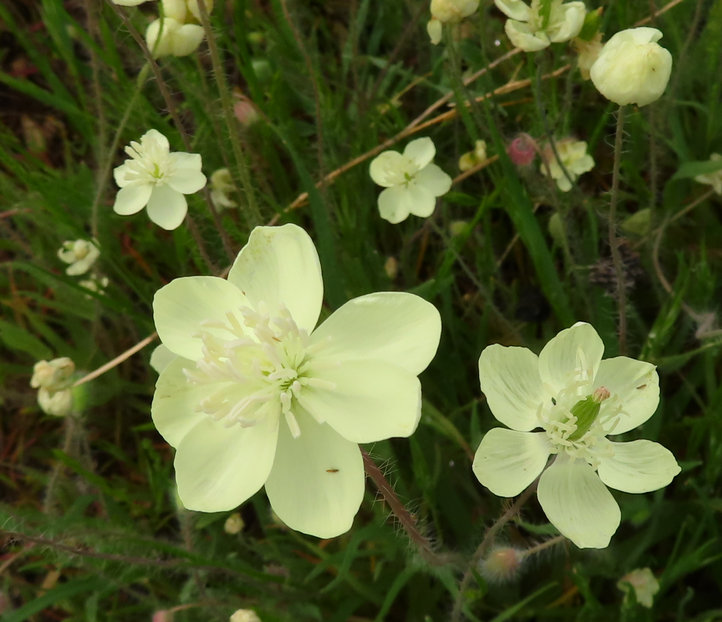
I find white flowers difficult to get good snaps of but today the cloudy skies helped out with that.
When we got to the creek and the "Big Rock" which is our traditional turnaround point, some doffed their footwear and cooled their heels in mountain water.
Not surprisingly Betsy and I went one step further.

Many thanks to Cindy for getting this shot. Betsy and I love it!
Bonus! Betsy, Kathy and I were trailing on the way back. Kathy was a bit ahead and someone pointed out this Curve-billed Thrasher's nest with these lovely blue eggs. They reminded me of robin eggs.
When nesting the Curve-billed Thrasher, Cactus wren and Verdin all take advantage of the protective spines of the cholla.
These three nests are easy to differentiate. The thrasher's nest is open and built with coarse twigs and lined with finer material.
The Cactus wren builds a nest with a long, tunnel like opening which is comprised of very fine and delicate material.
The Verdin's nests are quite unique and they build two types - one for breeding and one for roosting. Their nests are surprisingly large for the size of the bird. The nests are hollow globular masses of thorny twigs with a fine lining and they have an entrance low on one side or on the bottom.
Betsy and Kathy graciously agreed to pose for me.
The backdrop of the Catalina mountains adds some drama to the floral landscape.
Occasionally we see equestrians on the Sutherland trail. The trail passes through the state park and on to trails in the Coronado National Forest.
Here we have poppies, Desert Chicory and Scorpion weed. The display of Desert Chicory has been outstanding this year especially along some of the roadways.
Most of the Coulter's lupines (Lupinus sparsiflorus) are on their way out but we did see some plants with new emerging flower stalks.
Such a lovely rock garden!
The last shot of the day and a dandy on it is. The Hedgehog cactus has itty-bitty flower buds developing which will erupt forth into a glorious display.
Source: WikiPedia
See you next time...
Mike and Betsy




